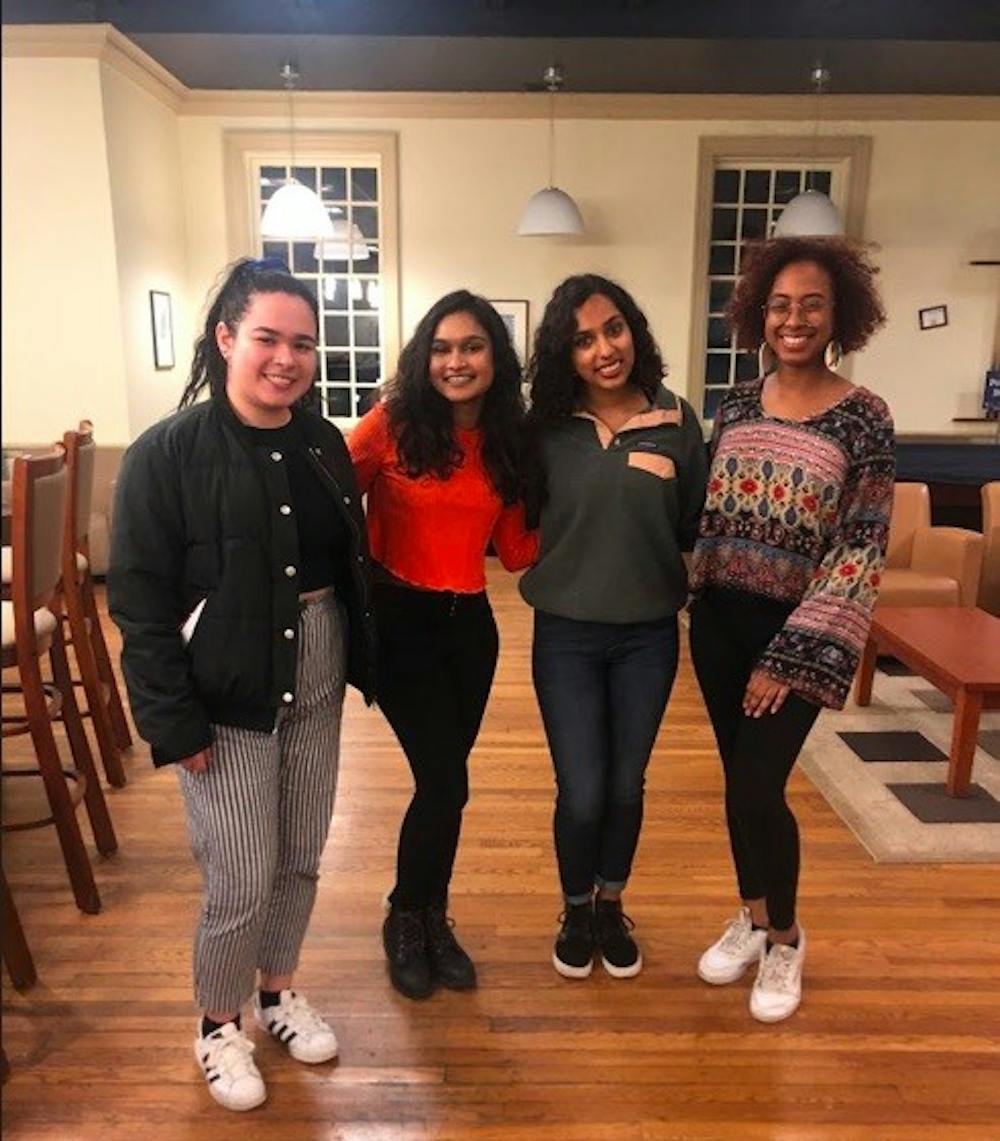The Black Student Union and Hopkins Feminists hosted a discussion called “Womanism: Building Coalitions” to celebrate Women’s History Month in the Levering Lounge on Wednesday.
Together with Women and Gender Resources Director Jeannine Heynes, the student panel spoke on a range of women and gender minority issues and the function of labels.
One of the questions the panelists struggled with the most was the relationship between the terms “feminist” and “womanist.”
For some, that relationship came down to a matter of generational preference and identity.
Junior Shalini Vijayekumar discussed her feeling that “feminist” was a term owned by an older generation and endowed with their specific values.
She said that she felt this generational divide most strongly around relationship expectations.
“Our generation has a different perspective than the older generations, whose definition of feminism can be very different from ours,” Vijayekumar said. “Some people stress being a feminist is about empowerment in yourself and not needing someone... But you can’t do everything on your own..”
Others on the panel said they felt that the relationship between feminist and womanist was more strongly determined by race.
Sophomore Danae Baxter said that womanist became an alternative to feminist because of the perception that the feminist movement centered around white women, not women of color.
“A lot of the racial issues in this country are institutionalized, so it can be really hard to separate very large movements like [feminism] from just the institutional issues in general,” Baxter said. “It takes a little more effort to be able to label yourself as an intersectional feminist or a black feminist because it takes a little effort to separate it from the white feminist movement.”
Junior Zainub Balla offered a different perspective, stating her understanding that race helps to explain the emergence of womanism as an alternative to feminism, while the relationship of the two terms today is less strongly defined by race.
“Womanism was born out of black women’s eyes, but I don’t think it has to necessarily be exclusive to black women,” she said.
Many of the panelists spoke about how little exposure they had received to womanism before the discussion. Heynes had screened a short video featuring Alice Walker — who had coined the term womanism in 1983 — and relayed her own understanding of the term.
“It’s not about becoming equal to men. It’s about society and the world accepting women as who they are. They don’t need to be just like men,” Heynes said.
Over the course of the discussion, other panelists offered their own defnitions of womanism.
Sophomore Karnika Mehrotra believes that womanism can be more inclusive than feminism.
“The point is inclusivity and the rejection of movements benefiting only certain groups. Creating a movement that embodies the goals of both women and gender minorities and racial minorities through the lenses of black women,” she said.
Not all the panelists were convinced that parsing these labels so closely was meaningful. Heynes argued that sometimes people will identify with the term that they are more comfortable with.
Vijayekumar advocated for an approach rooted in universal acceptance.
“Do there have to be distinct terms? Do we have to identify as ‘womanists’ or ‘feminists’? Why can’t we just support women?” she said.
Laura Wadsten contributed reporting.





